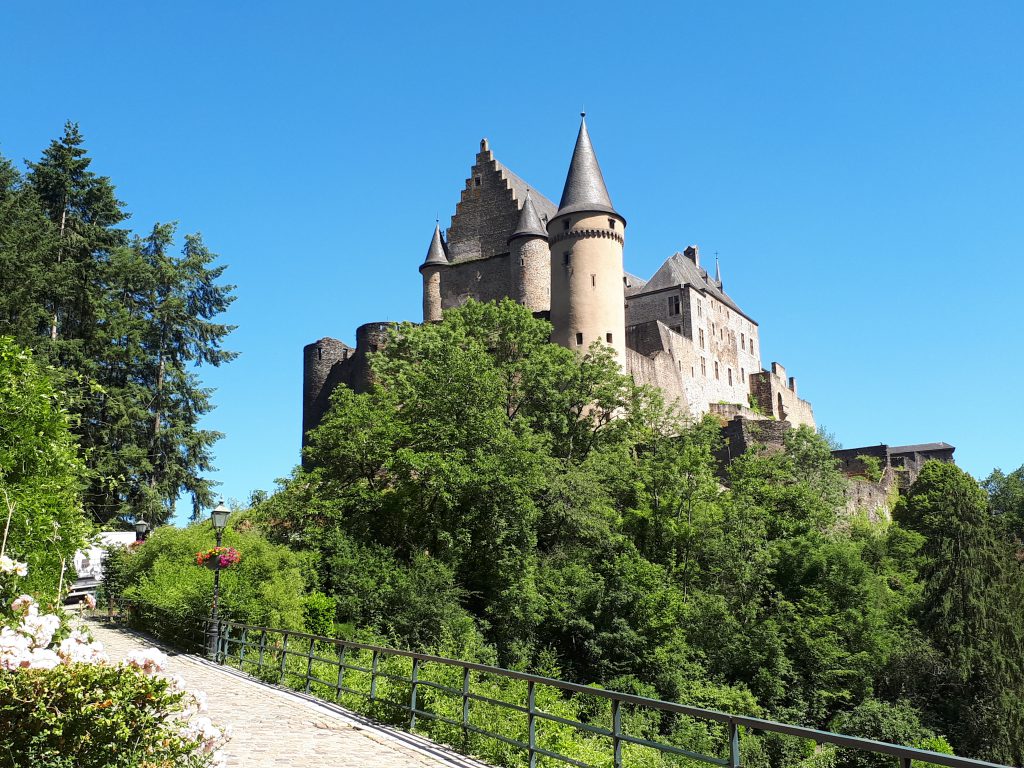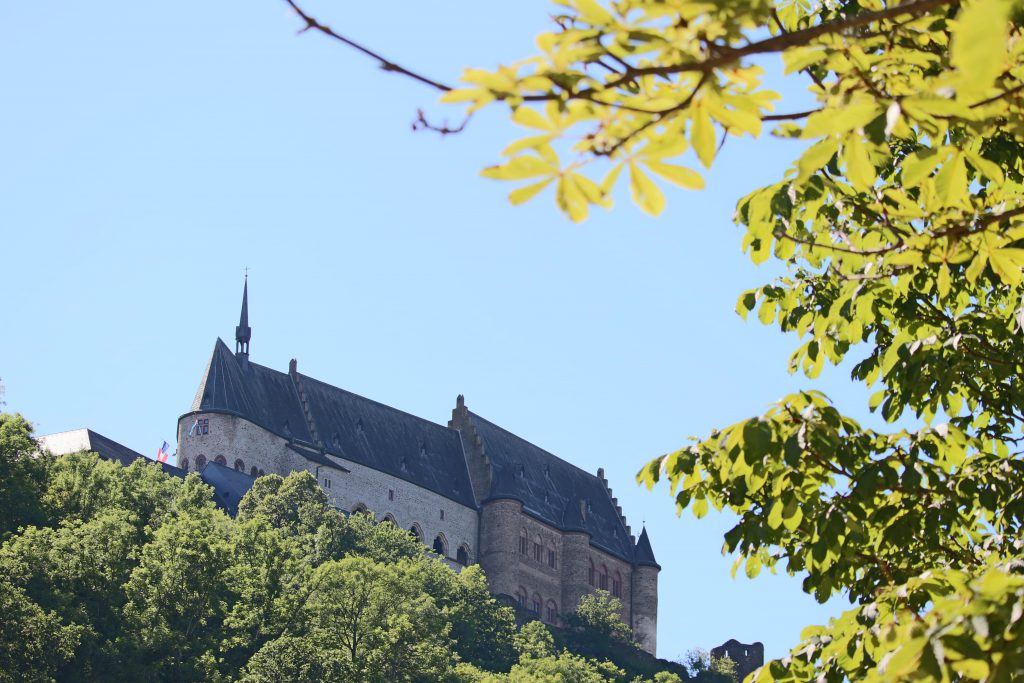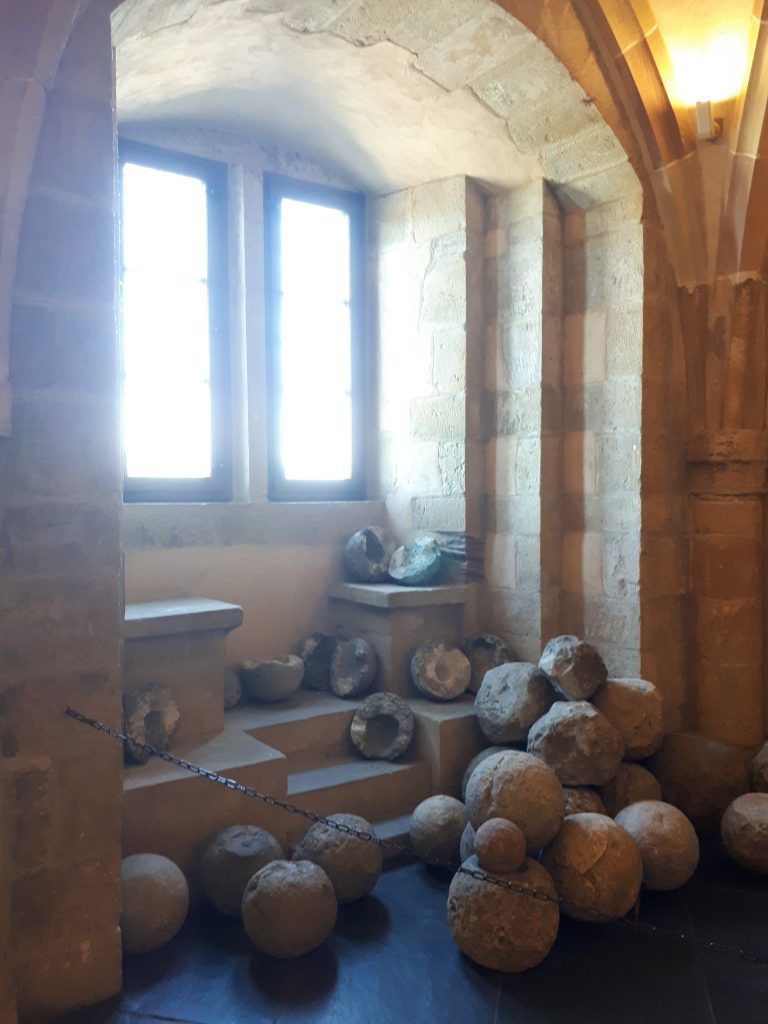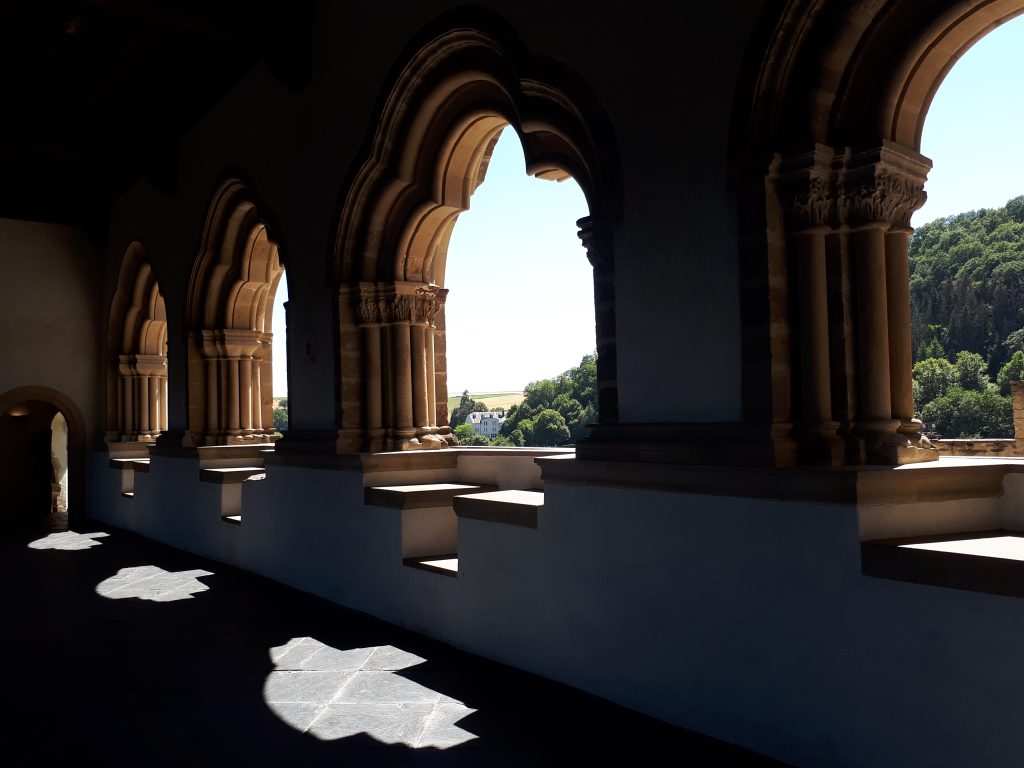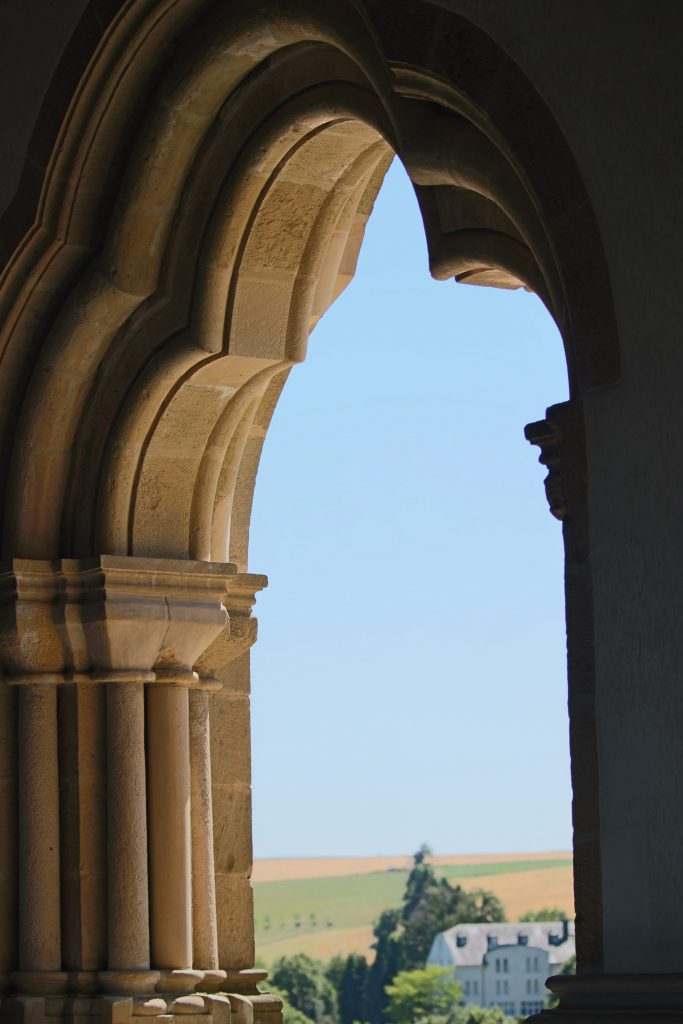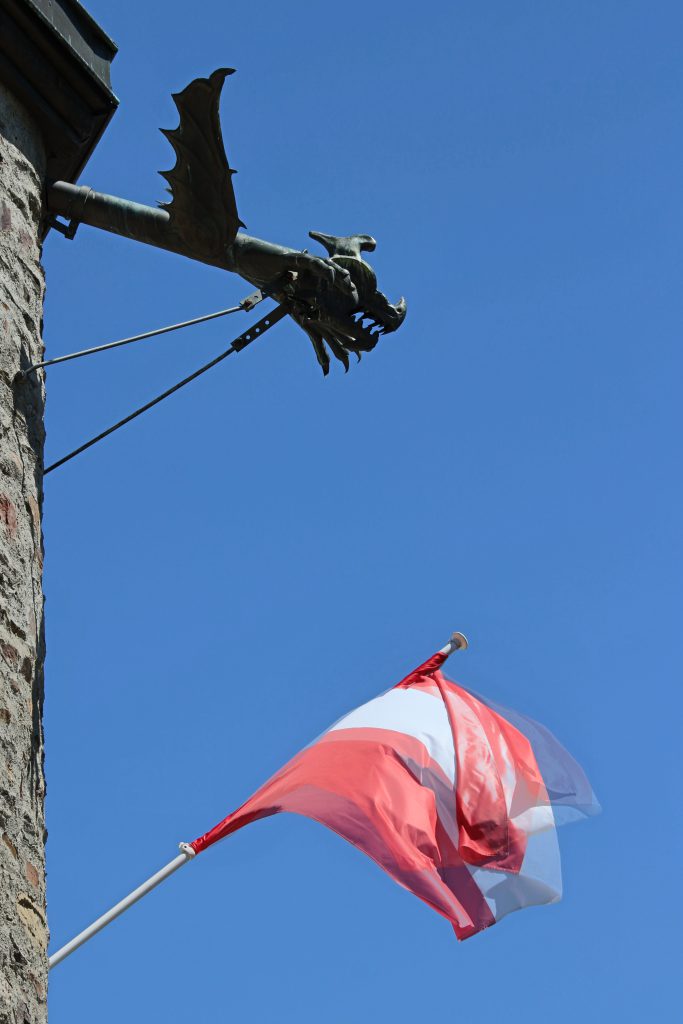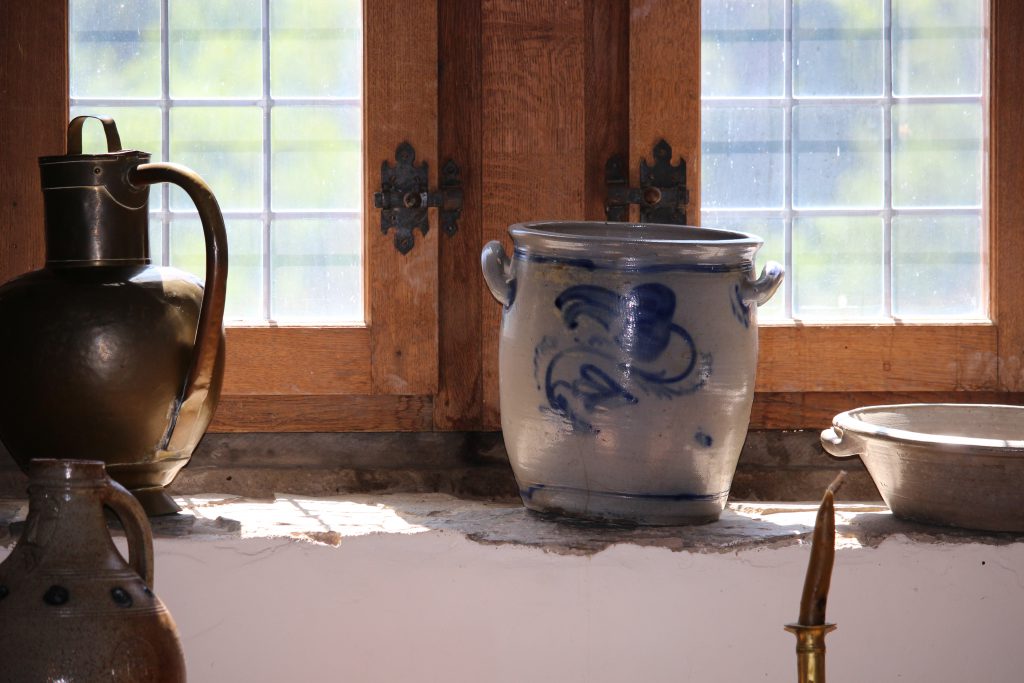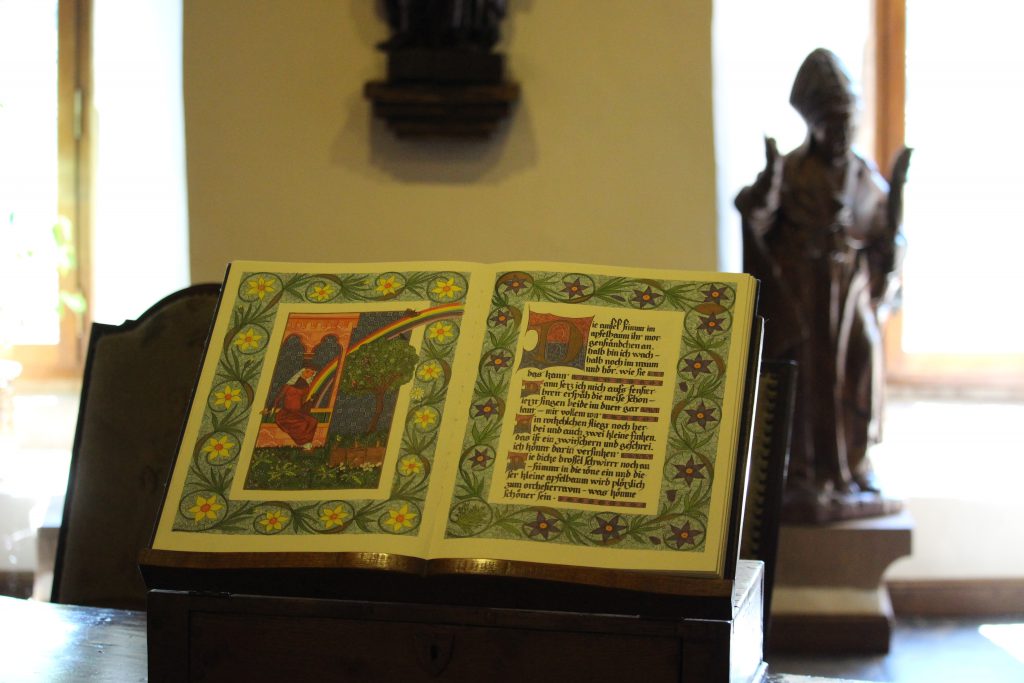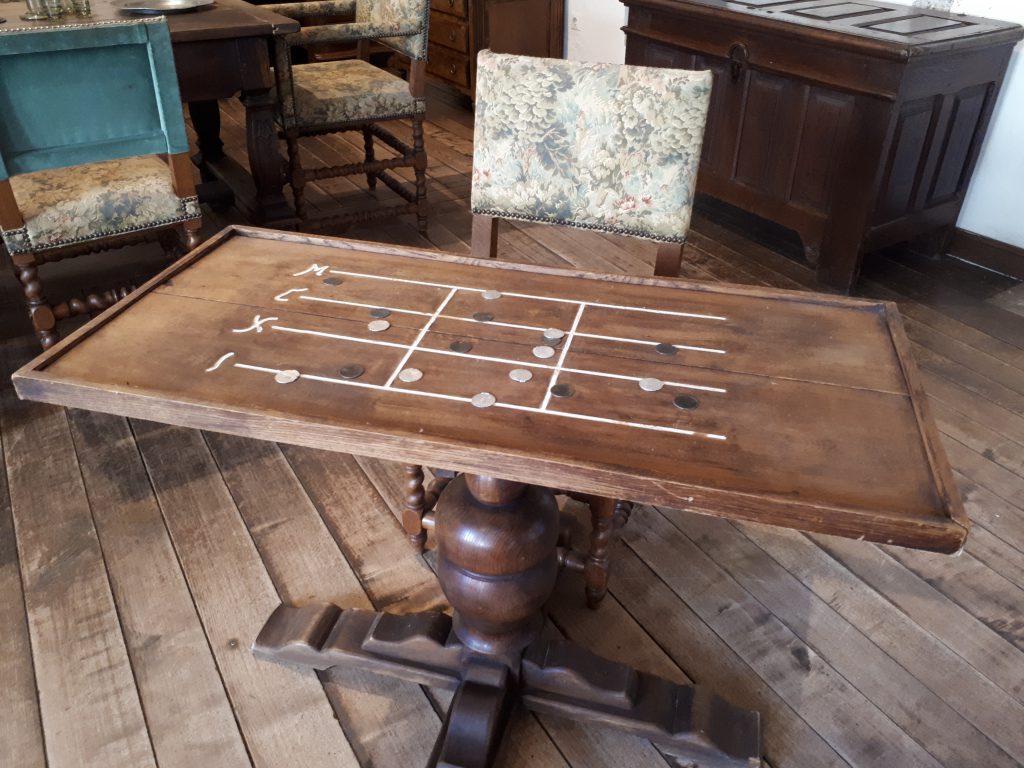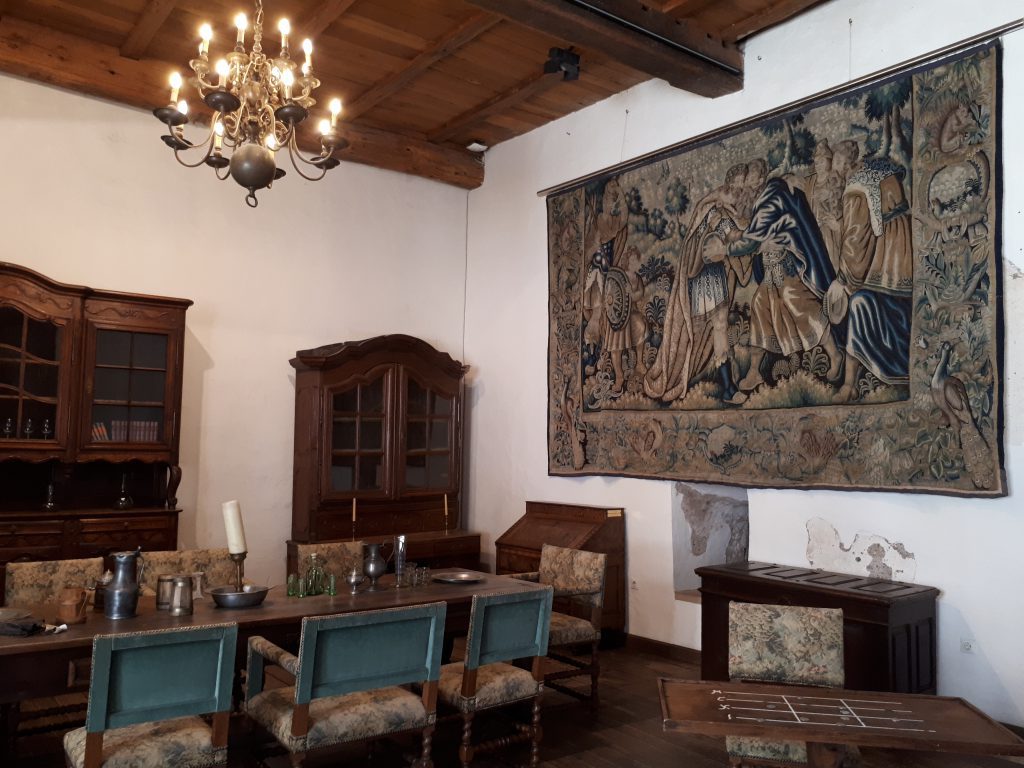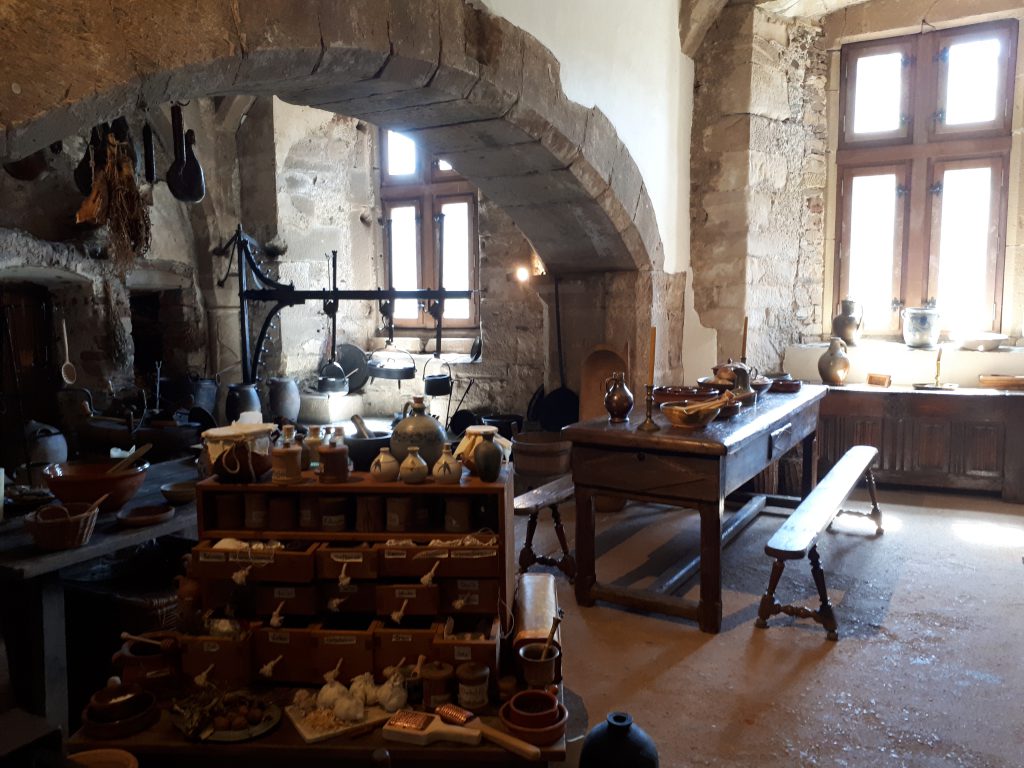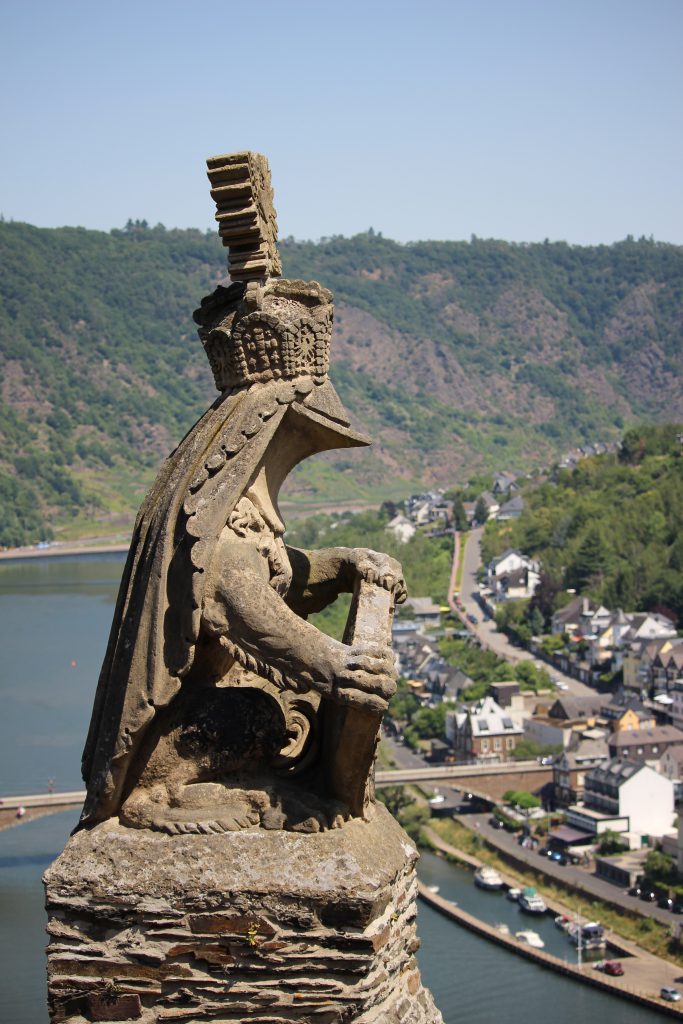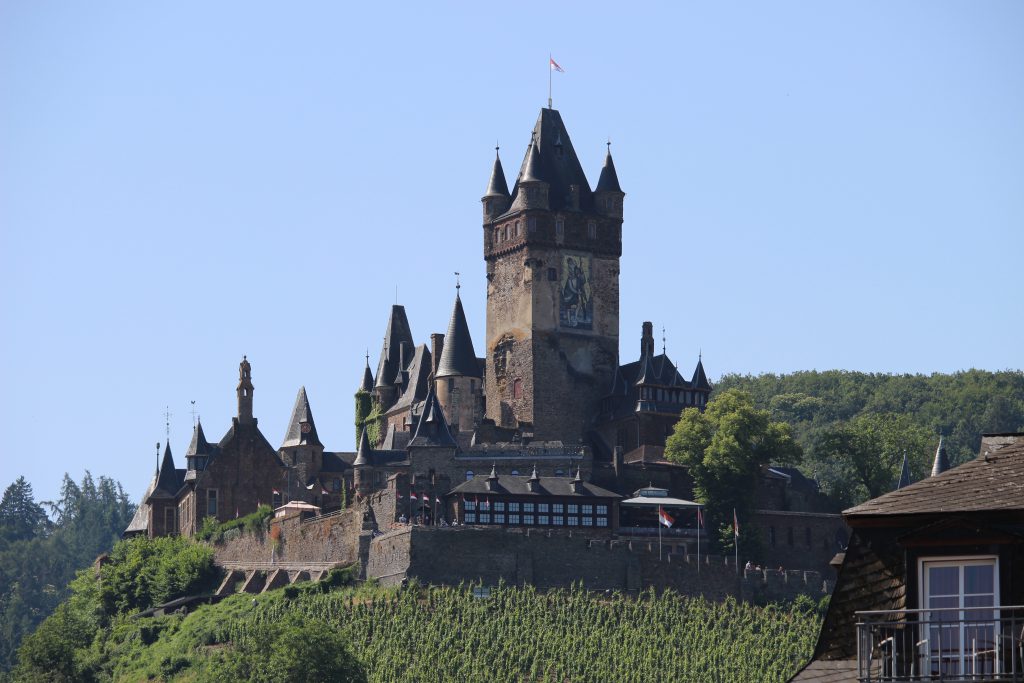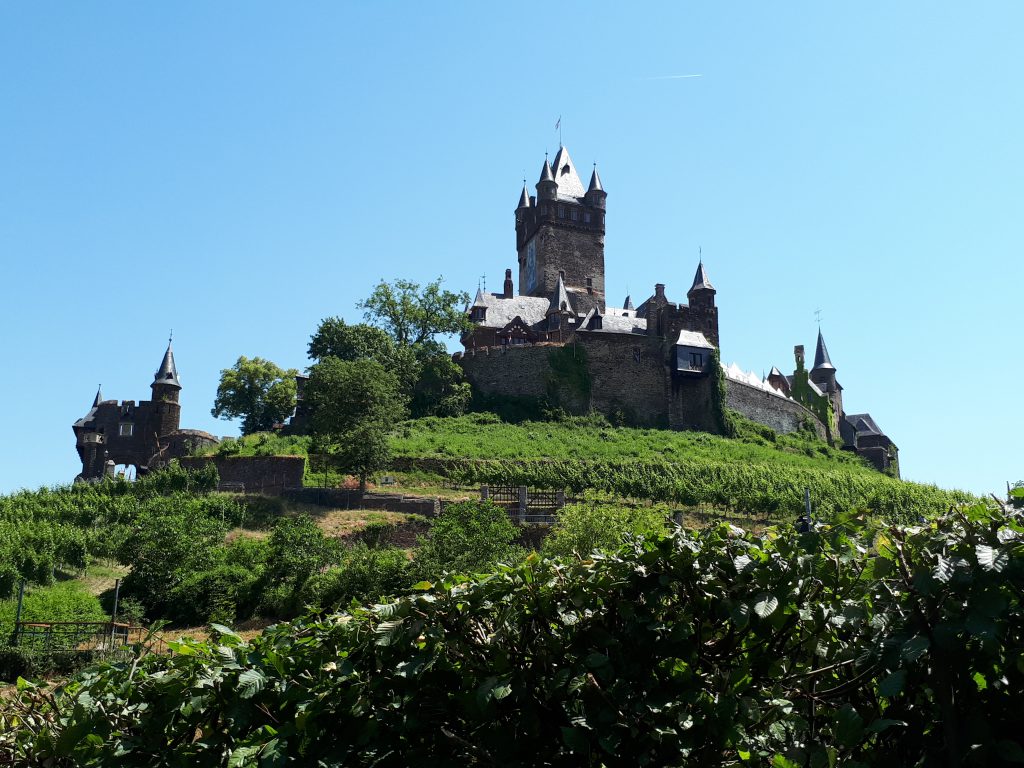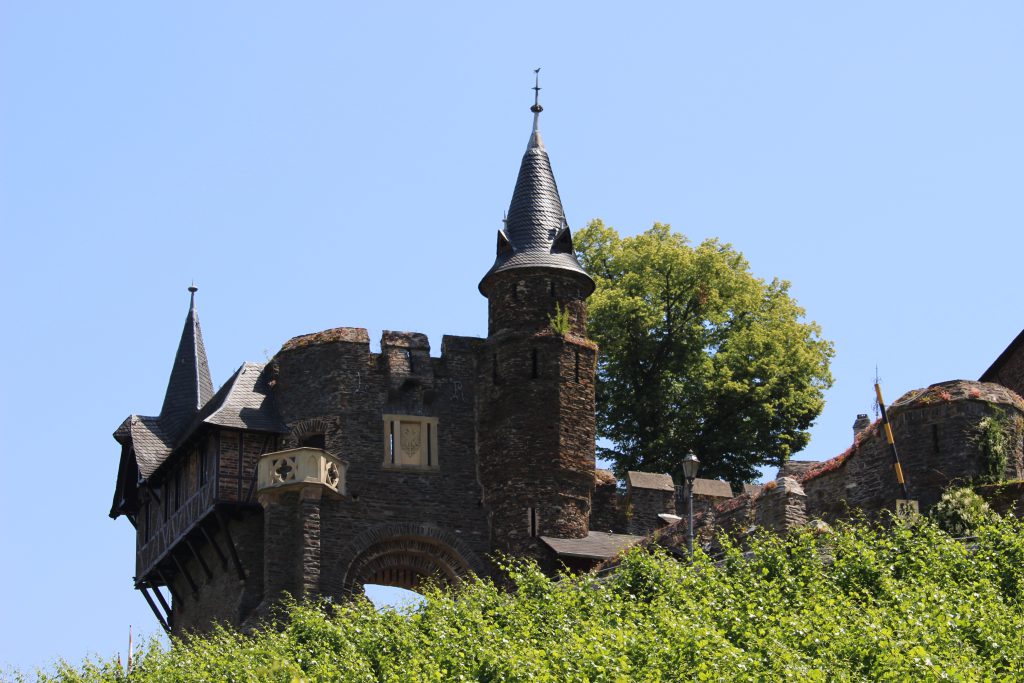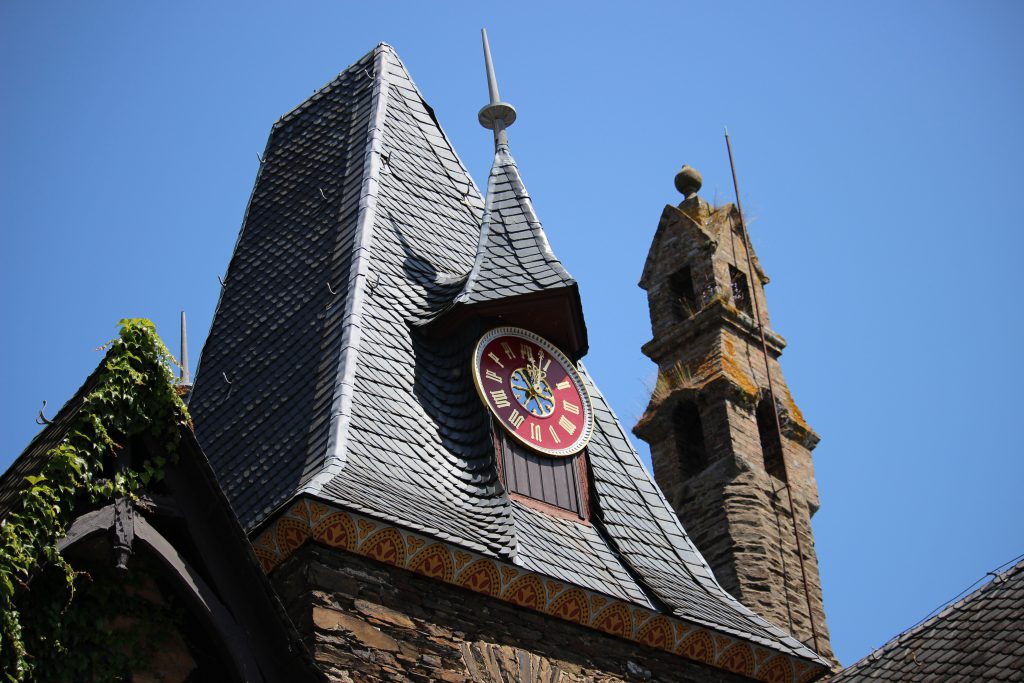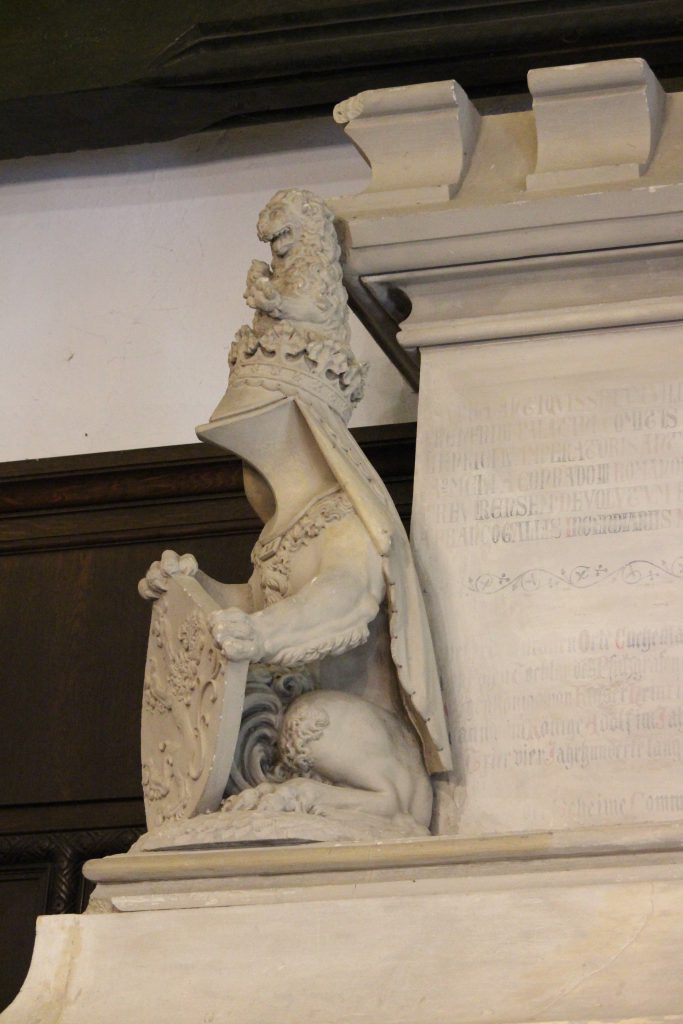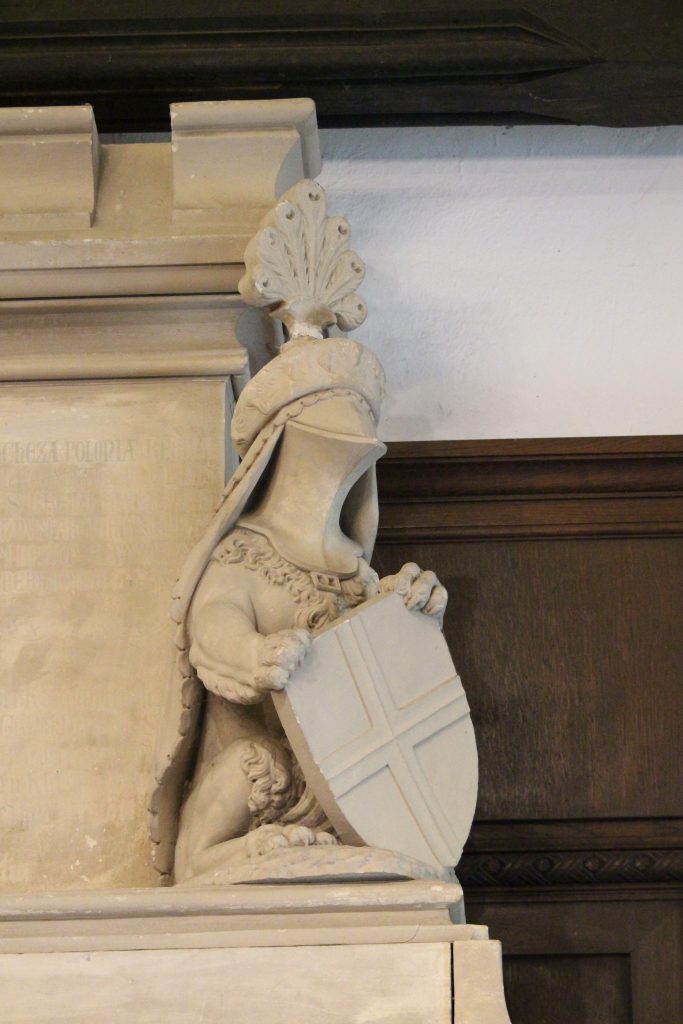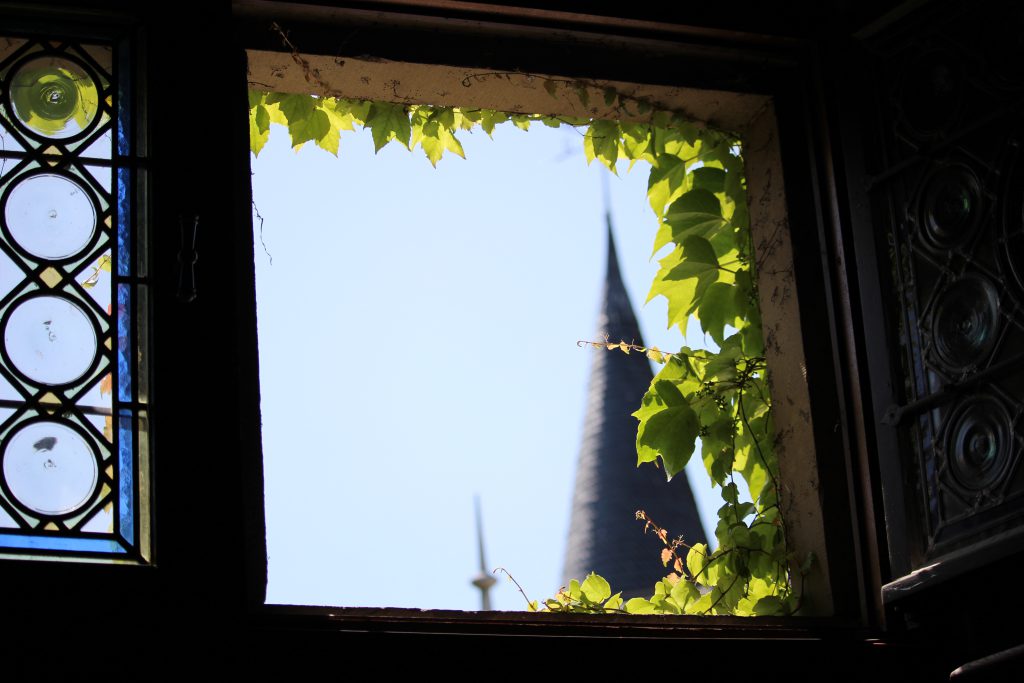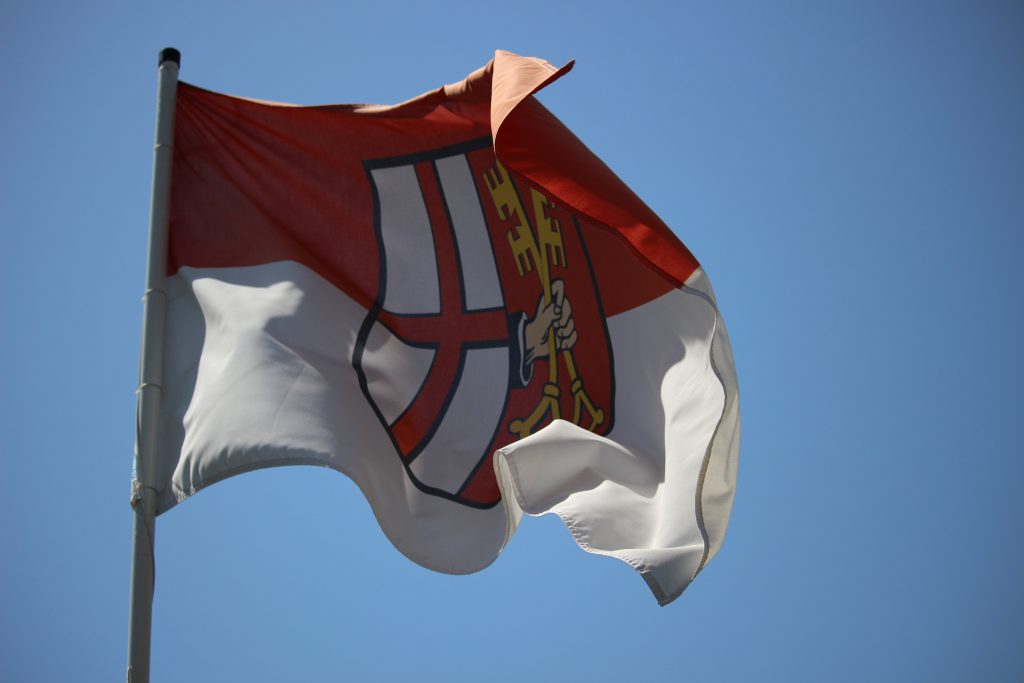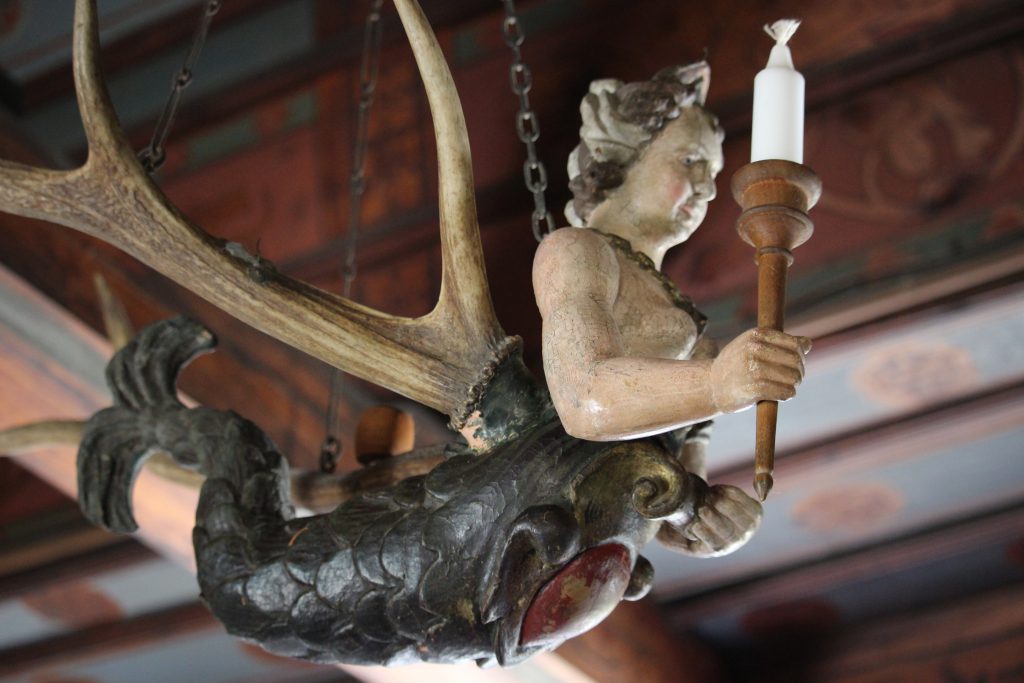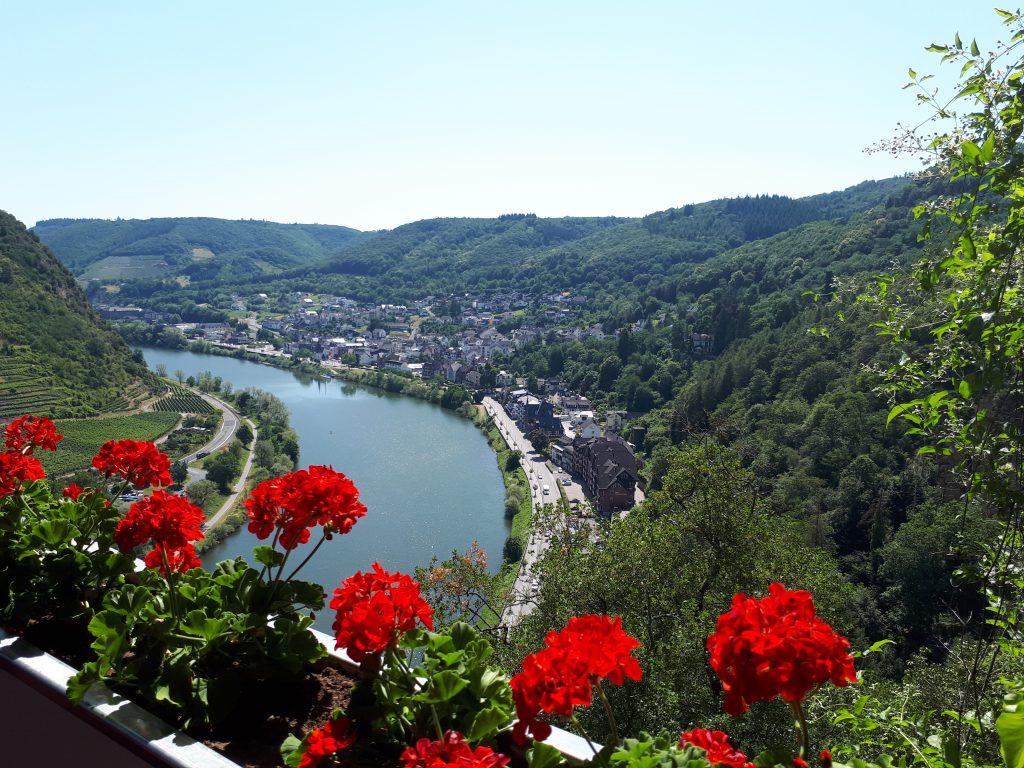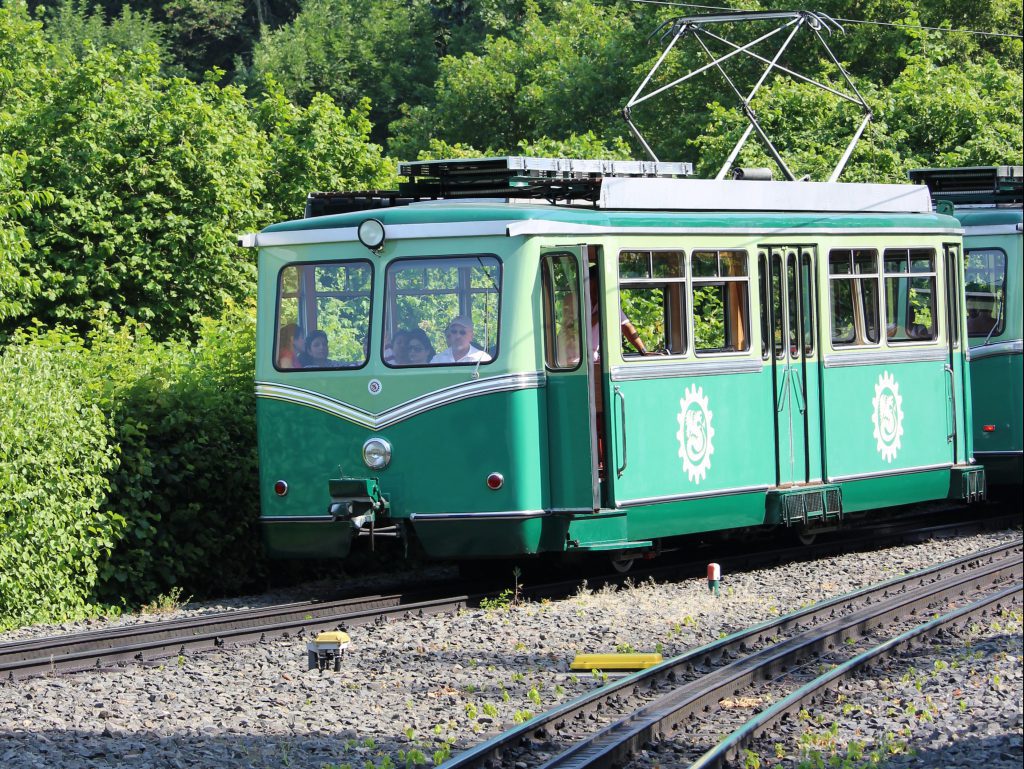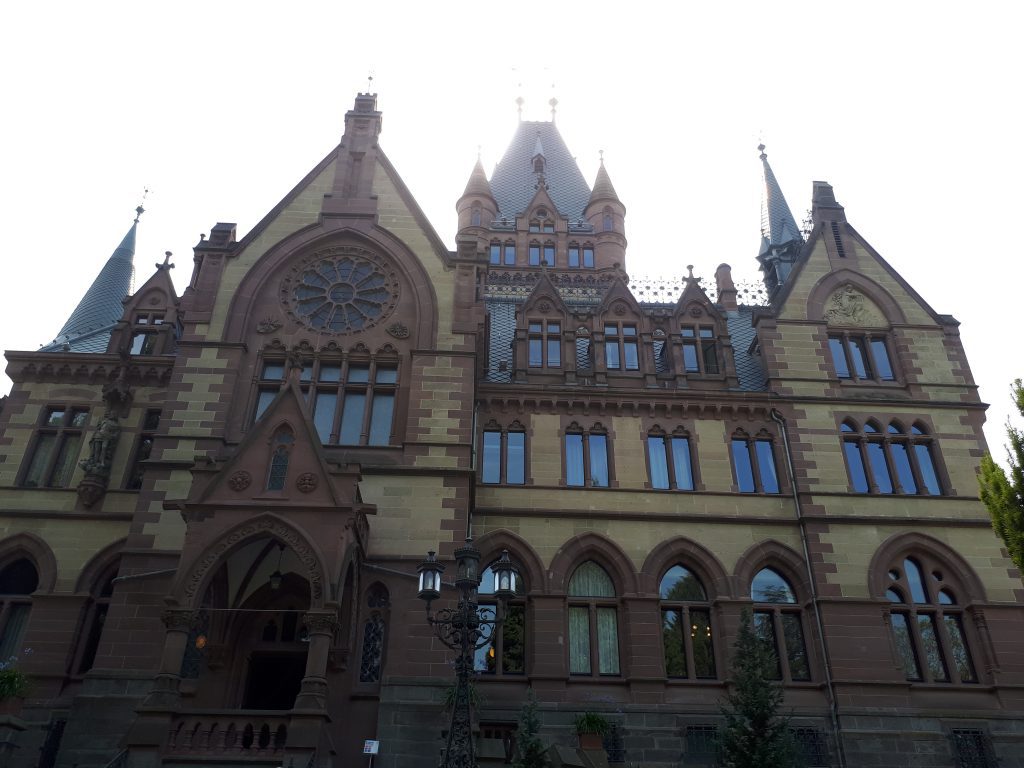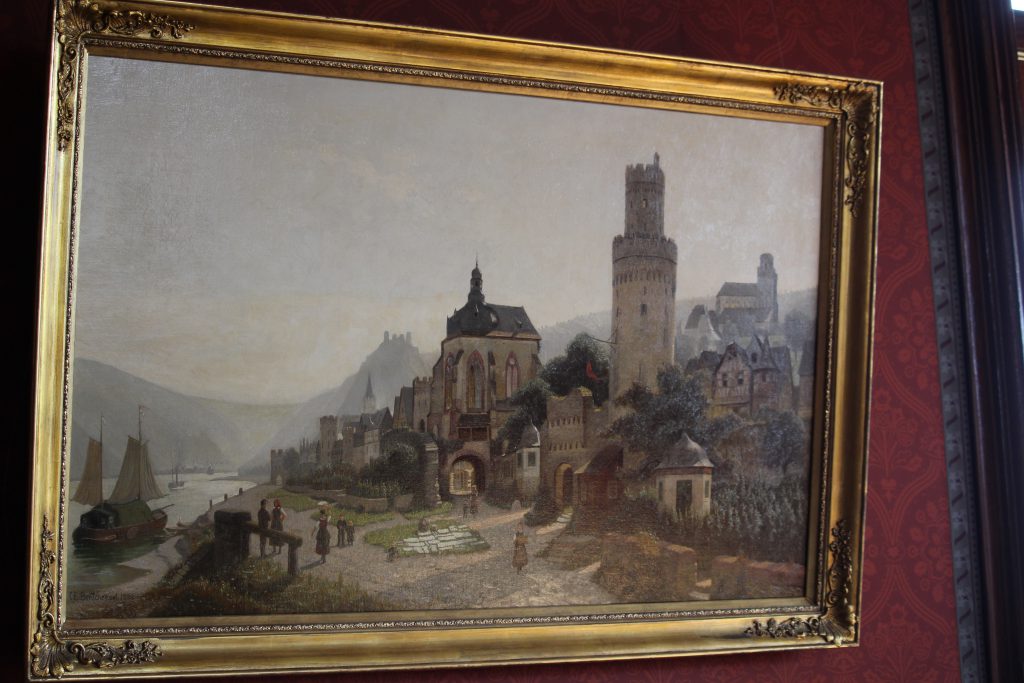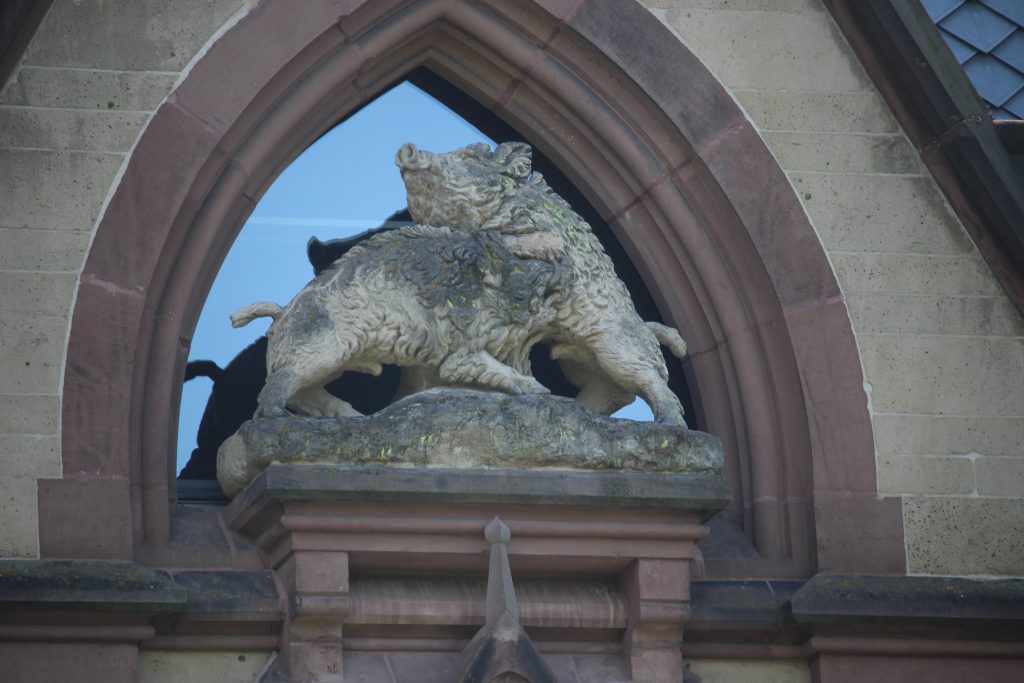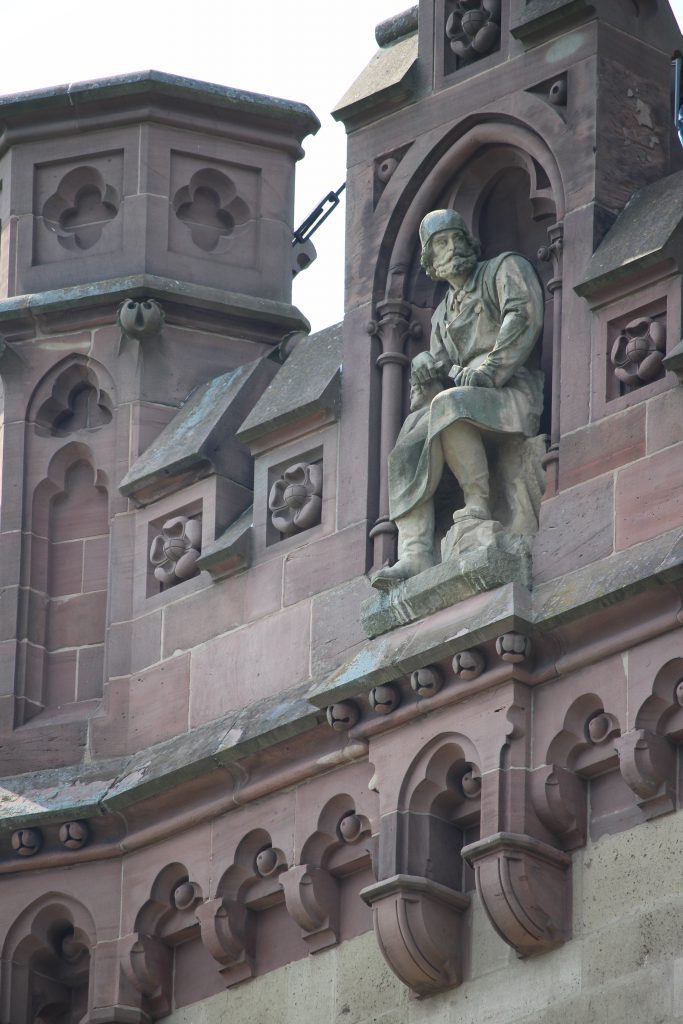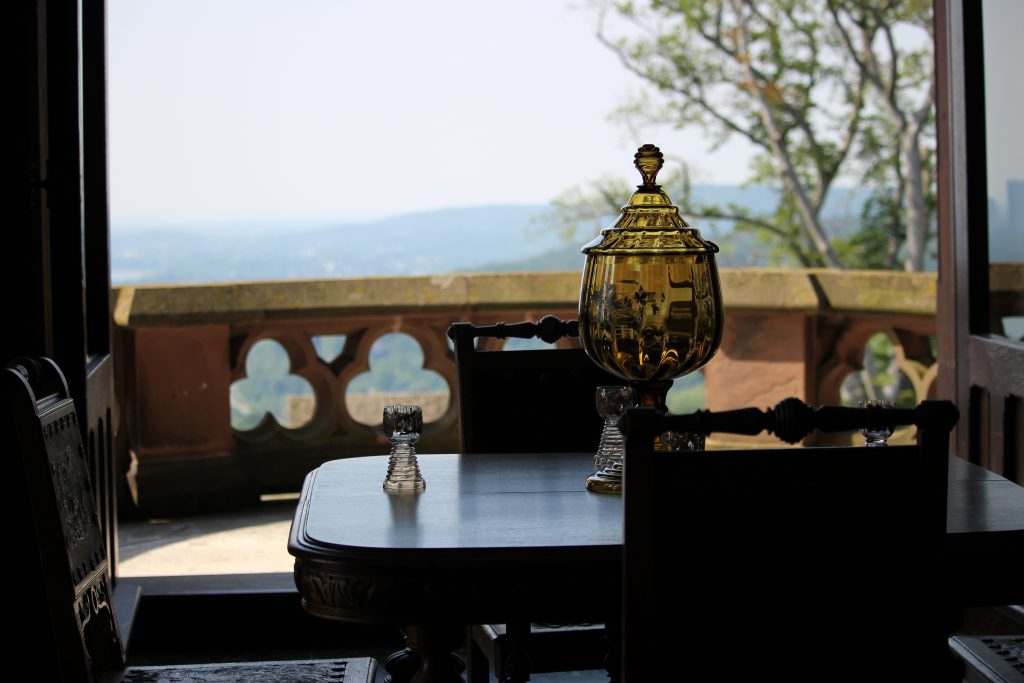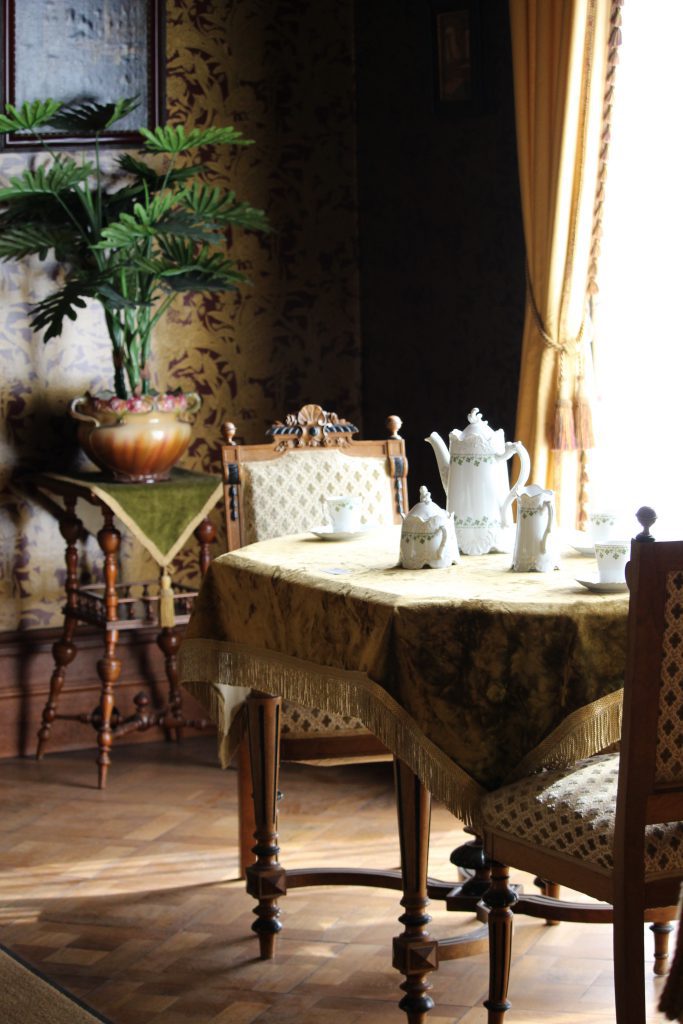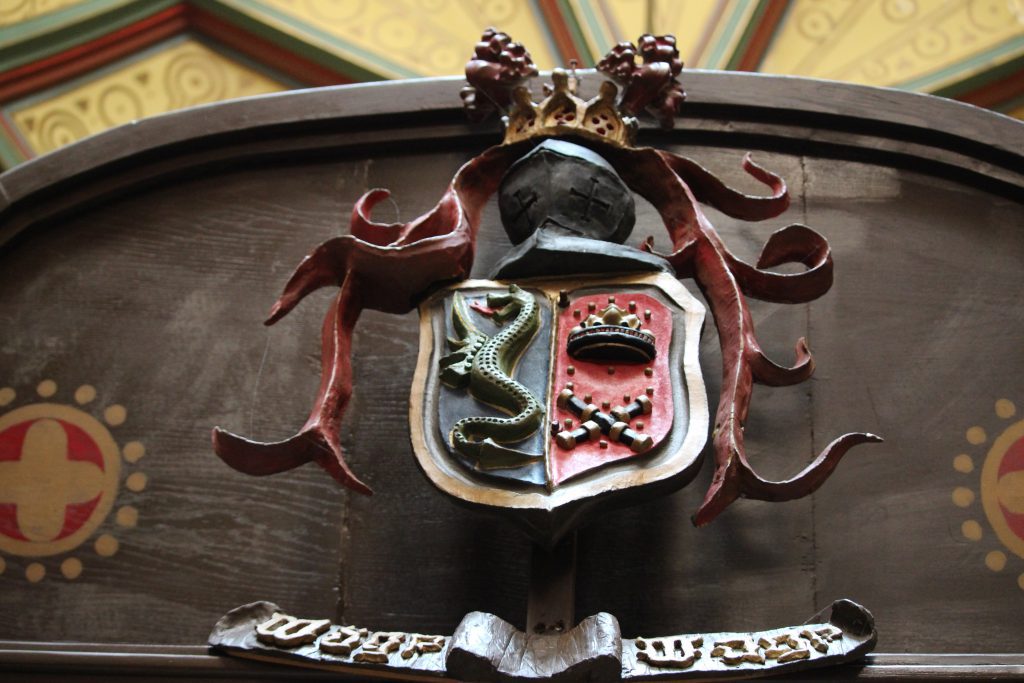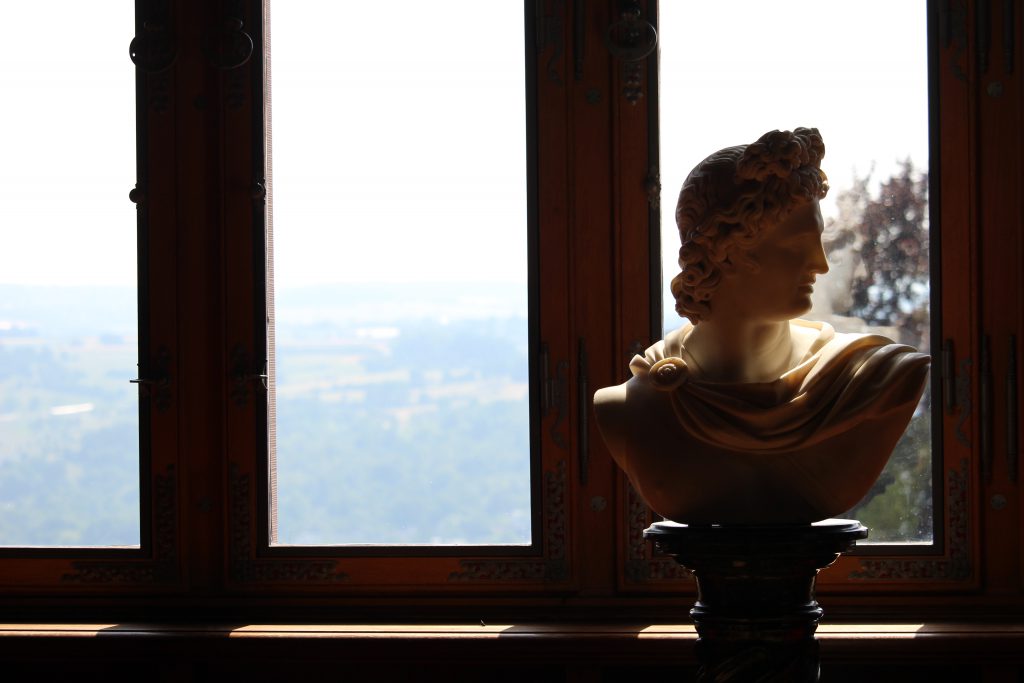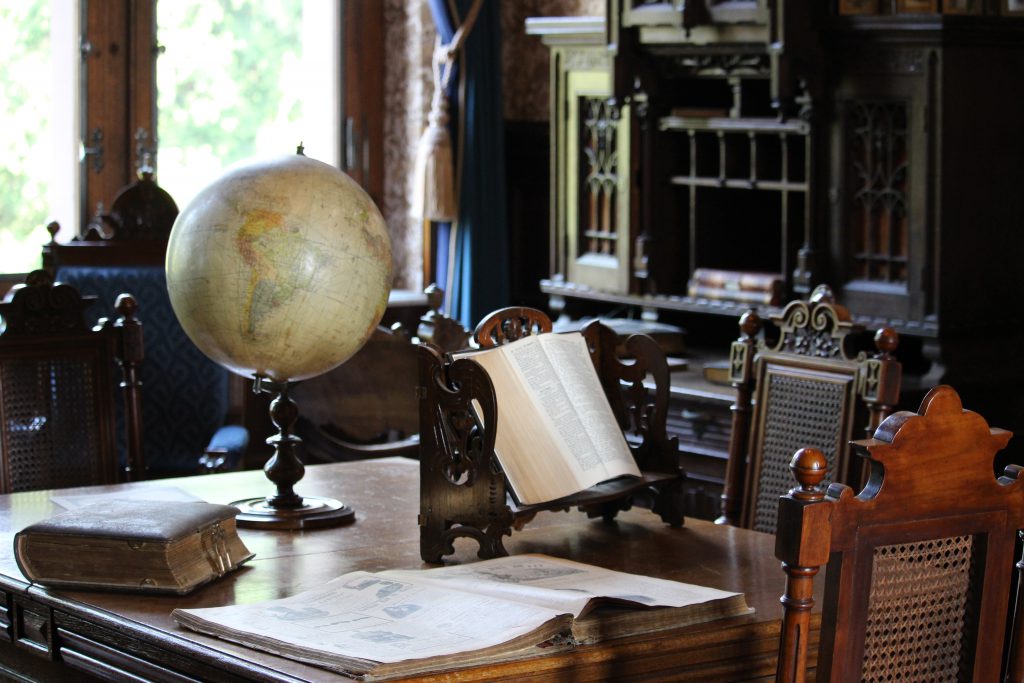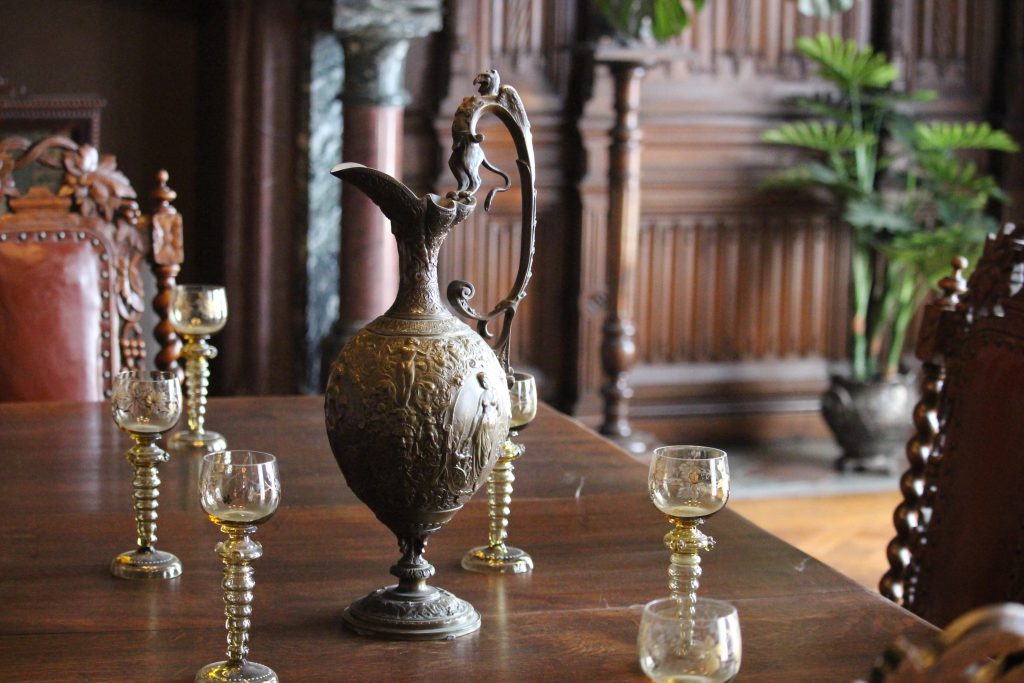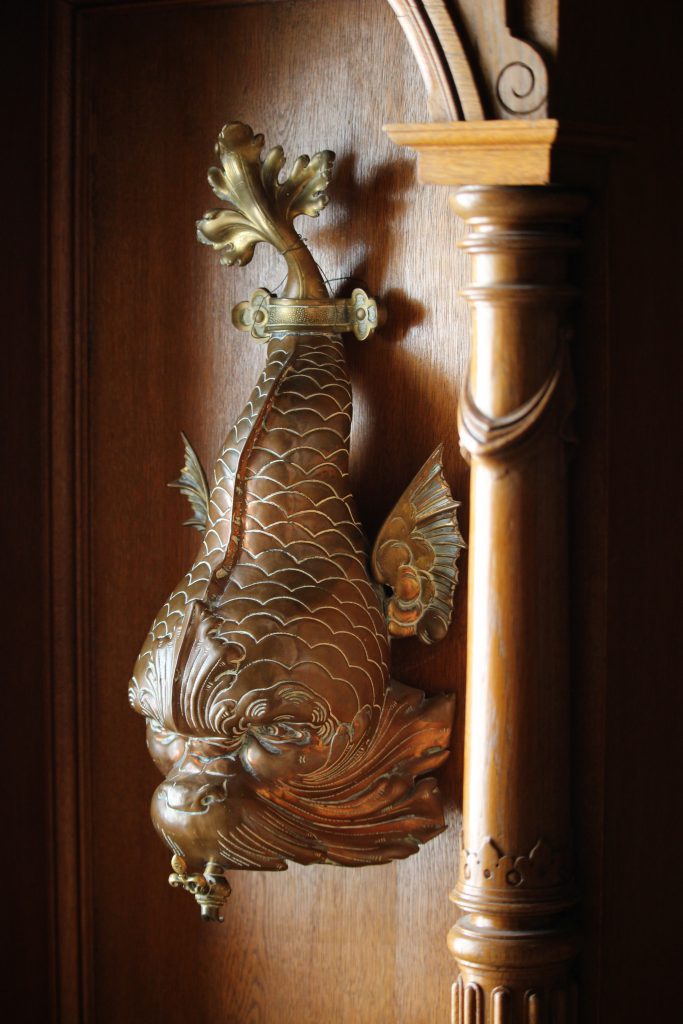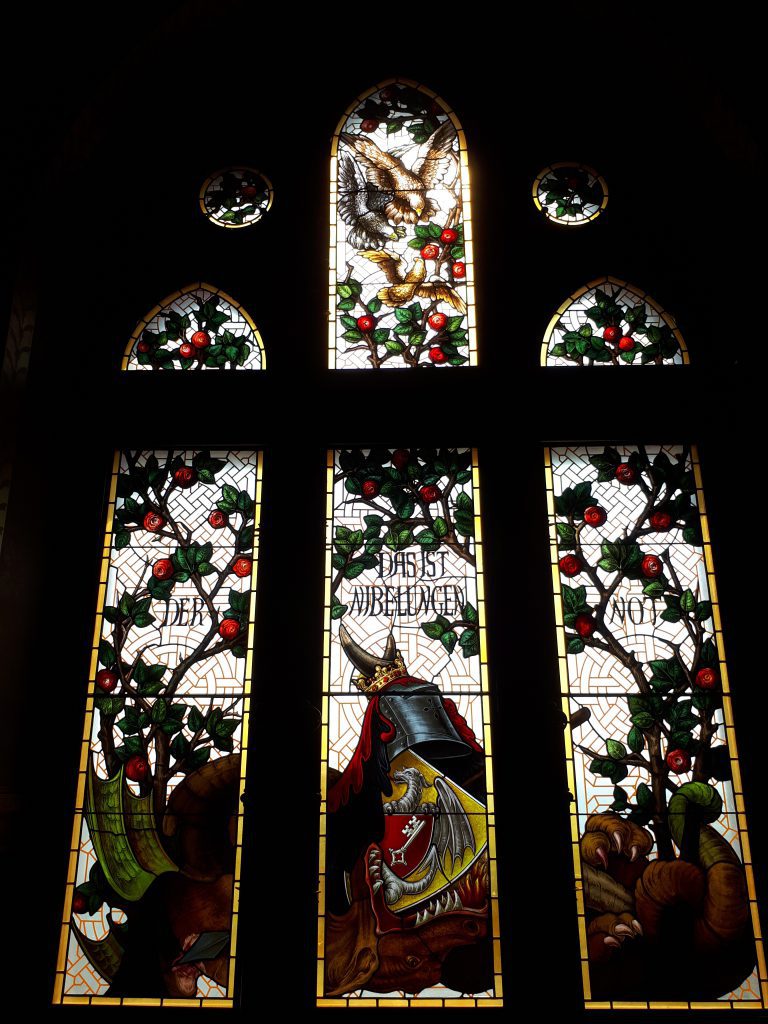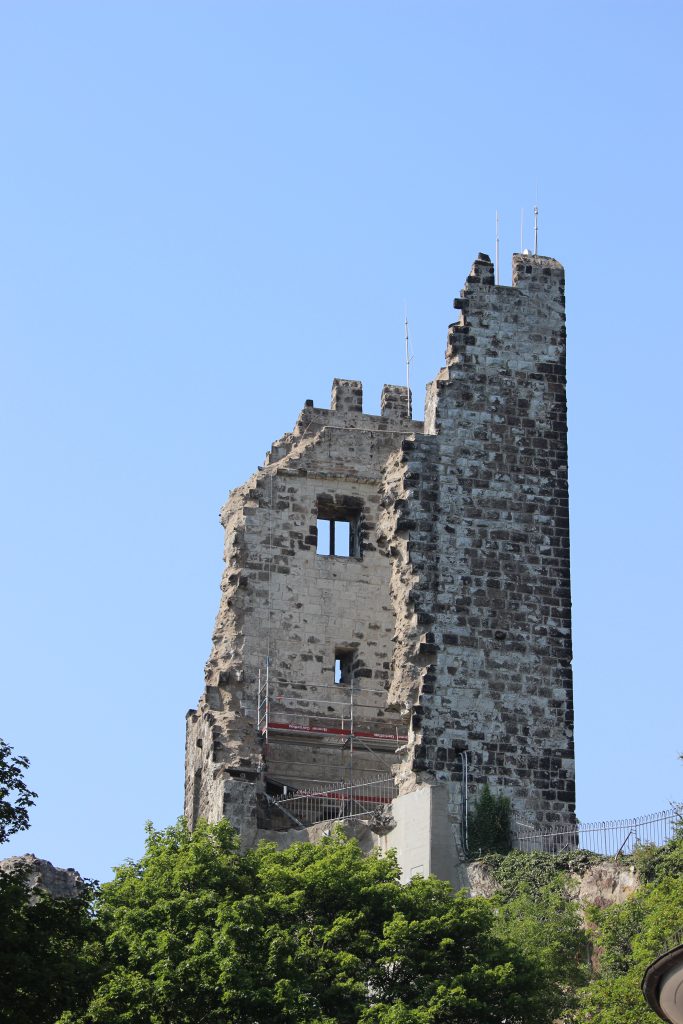Castles in Luxemburg and Germany
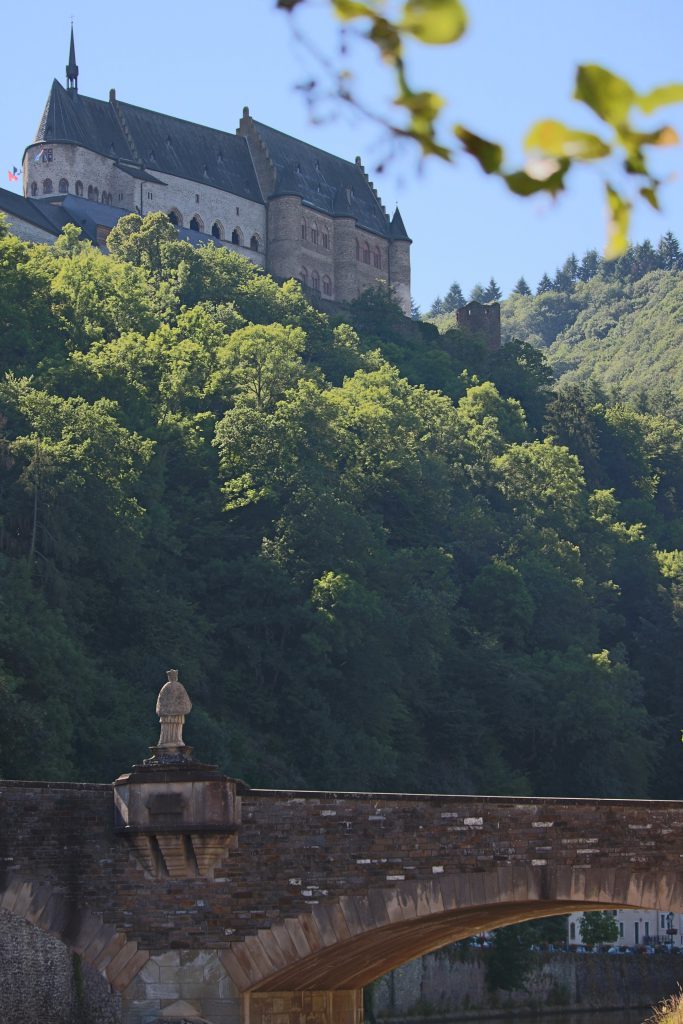
Castle of Vianden
Castle of Vianden in Luxembourg was built between the 11th and 14th Century on the foundations of a Roman castle and a Carolingian refuge. It is one of the largest and most beautiful feudal residences of the romanesque and gothic periods in Europe.

Road to Castle of Vianden 
View on Castle of Vianden

Knight at Castle of Vianden 
Canon balls in Castle of Vianden 
Gallery in Castle of Vianden

View from Castle of Vianden 
Flag at Castle of Vianden

Pots in the kitchen of Castle of Vianden 
Book in Castle of Vianden 
Game at Castle of Vianden 
Room in Castle of Vianden 
Kitchen of Castle of Vianden
Castle Reichsburg in Cochem
In the scenic town of Cochem on the Moselle River lies Imperial Castle Reichsburg. The castle we see today is not the castle that originally stood there in the 12th century. That castle had a long and colorful history until French King Louis XIV had his troops obliterate it in 1689.
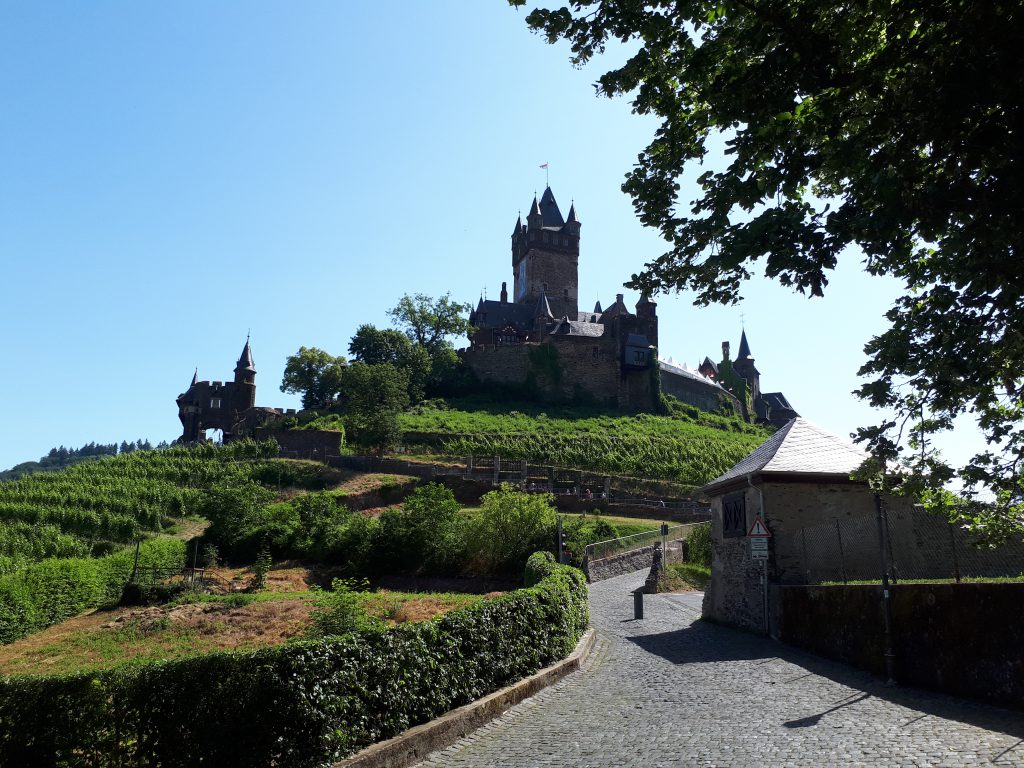
The castle remained a colorful stone ruin for 180 years until the wealthy Berlin businessman Louis Ravené decided to buy the ruins and rebuild the castle in 1868. Interestingly, he did this in the same year that Bavarian King Ludwig II began construction on his Romanesque revival Neuschwanstein Castle, also built upon the ruins of an old castle. The original Cochem Castle served to collect tolls from passing ships. It was probably build around 1100.
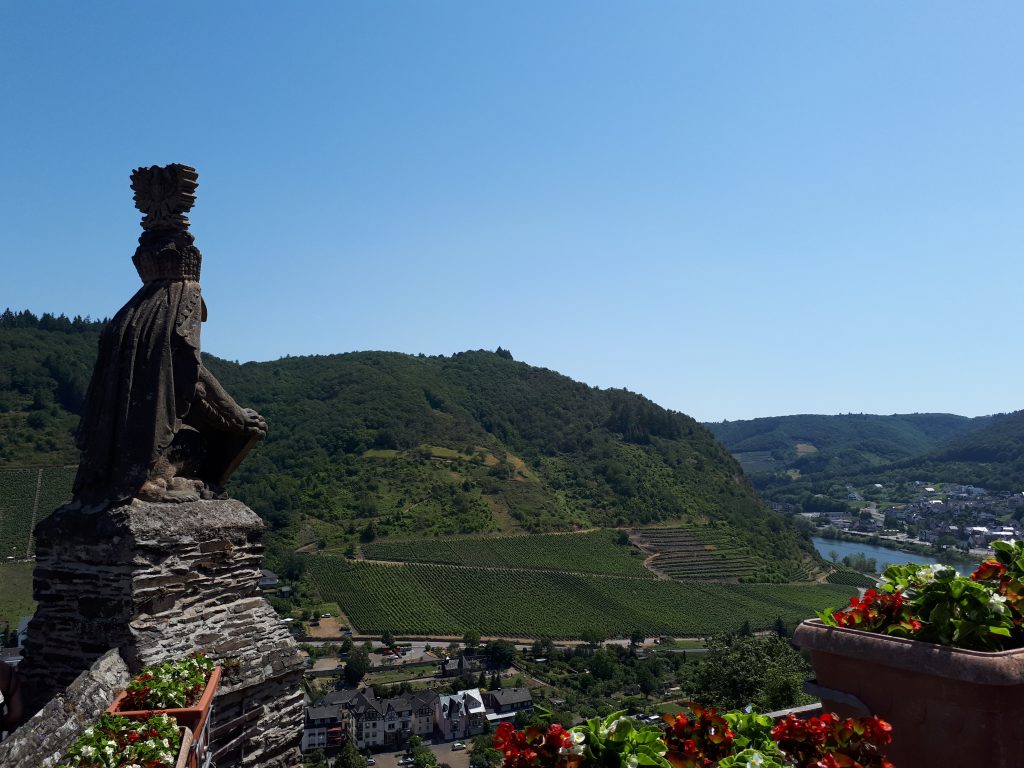

Guard at the entrance of Reichsburg castle Cochem 
Reichsburg castle Cochem 
Reichsburg castle Cochem

Entrance gate Reichsburg castle Cochem 
Rooftop Reichsburg castle Cochem 
Guard Reichsburg castle Cochem 
Guard Reichsburg castle Cochem 
View from Reichsburg castle Cochem 
Flag Reichsburg castle Cochem 
Drinkhorn Reichsburg castle Cochem 
Decoration Reichsburg castle Cochem 
Me at the entrance of Reichsburg castle Cochem 
View from Reichsburg castle Cochem
Schloss Drachenburg
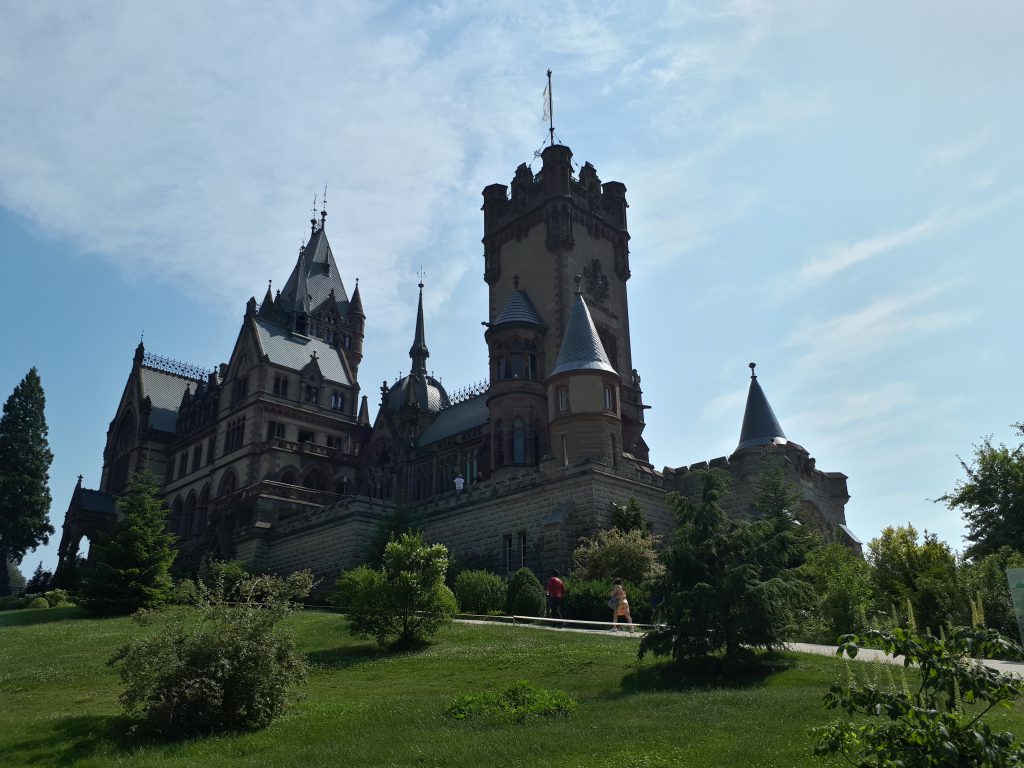
Schloss Drachenburg was built on the Drachenfels hill (Dragon Rock) in Königswinter, a German town on the Rhine near the city of Bonn. Siegfried, the hero of the Nibelungenlied, is said to have slayed the dragon Fafnir here and bathed in its blood to become invulnerable. You can visit the rock with a little tram that stops at the castle and at the top.

Train on Drachenfels (Dragon Rock) 
On the train on Drachenfels (Dragon Rock) to Drachenburg
The fortress’ history began as a defense from attackers. Arnold I, the Cologne archbishop, ordered its construction from 1138 to 1167. But the fortress’ development was undone in 1634 when an archbishop pulled it down during the Thirty Years War. Erosion continued man’s work and today there is little but rubble left of the earlier structure atop the hill. The current castle is a neogothic castle from 1882 owned by numerous private owners, but nowadays it owned by the state of North Rhine-Westphalia and is open to the public.

Schloss Drachenburg 
Painting of Schloss Drachenburg 
Pigs Schloss Drachenburg 
Guard of Schloss Drachenburg

Balcony view Schloss Drachenburg 
Inside Schloss Drachenburg 
Inside Schloss Drachenburg 
Inside Schloss Drachenburg 
Room inside Schloss Drachenburg 
Inside Schloss Drachenburg 
Fish inside Schloss Drachenburg 
Window of Schloss Drachenburg 
Ruins on top of Drachefels
